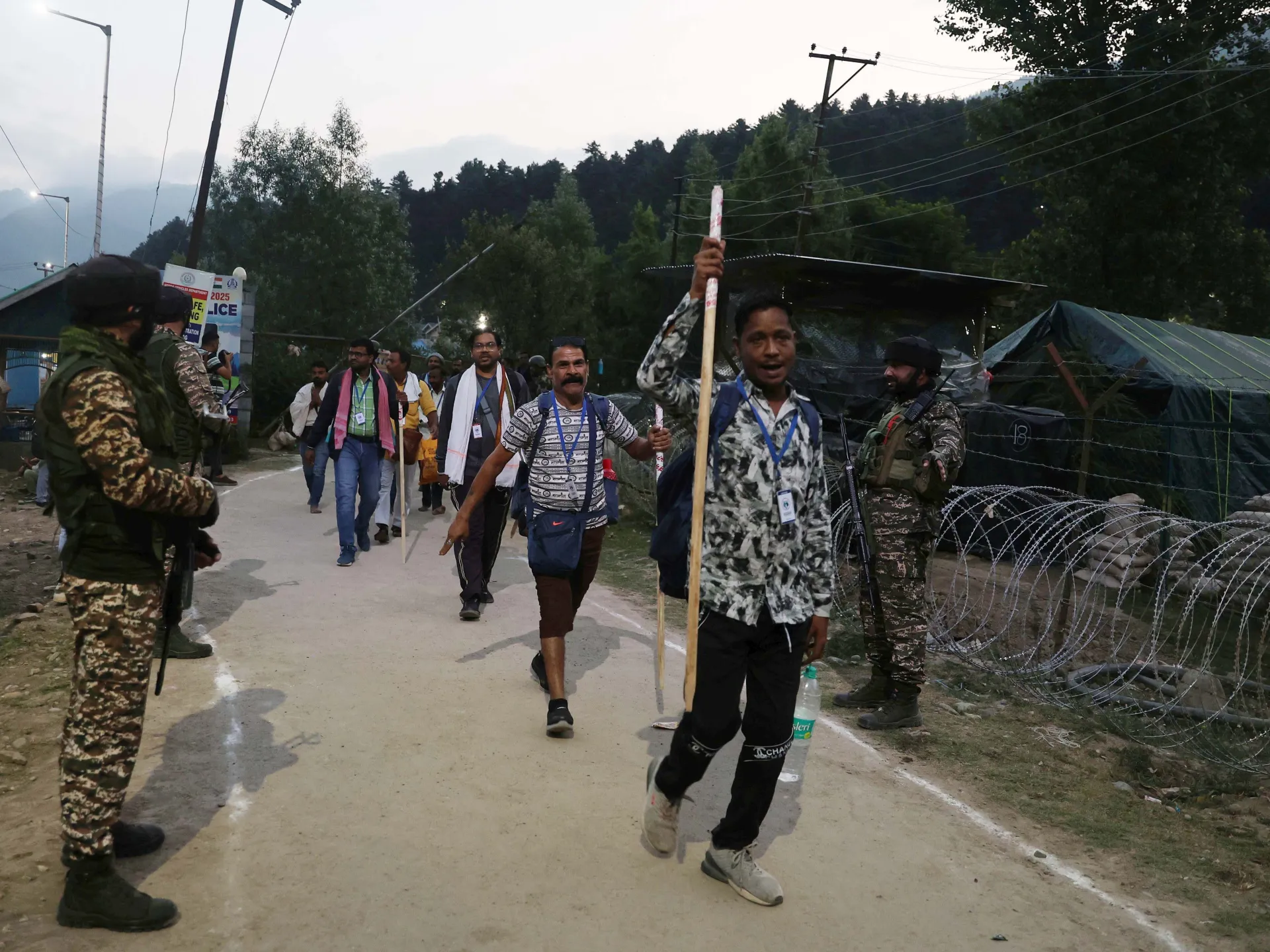By Al Jazeera Apps Support
Hindus have embarked on a monthlong pilgrimage in Muslim-majority Indian-administered Kashmir, with many of the faithful on Thursday starting from near the site where a deadly attack in April triggered a four-day conflict between India and Pakistan, which propelled the region to the cusp of their fifth all-out war.
Last year, half a million devotees took part in the Amarnath pilgrimage to a sacred ice pillar, located in a cave in the forested Himalayan hills above the town of Pahalgam, where gunmen on April 22 killed 26 mostly Hindu tourists.
New Delhi said the gunmen were backed by Pakistan, claims Islamabad vehemently rejected, setting off a series of tit-for-tat diplomatic measures that then erupted into a four-day conflict on May 7.
It was the worst standoff by the nuclear-armed nations since 1999, with more than 70 people killed in missile, drone and artillery fire on both sides, before a ceasefire was declared on May 10.
“Pilgrims I spoke to earlier said they were worried about the security at first, but now feel safe after seeing the strong security arrangements,” said Al Jazeera’s Umar Mehraj, reporting from Pahalgam.
“The April attack has made this year’s pilgrimage more cautious and technology-based, with the highest level of security ever, with around 600 additional paramilitary units having been deployed, making it the most heavily guarded pilgrimage so far,” he added.
Pilgrim Muneshwar Das Shashtri, who travelled from Uttar Pradesh state, told the AFP news agency that “there is no fear of any kind.
“Our army is standing guard everywhere. No one can raise a finger towards us,” he said.
India has ramped up security for the event, deploying 45,000 soldiers with high-tech surveillance tools to oversee the gruelling trek to the high-altitude cave, dedicated to the Hindu deity of destruction, Shiva.
“We have multi-layered and in-depth security arrangements so that we can make the pilgrimage safe and smooth for the devotees,” said VK Birdi, police chief for the territory.
Surveillance systems like security cameras and facial recognition have been set up, as well as checkpoints, added Mehraj, with paramilitary posts every 100 metres (330ft).
‘Public confidence is returning’
All pilgrims must be registered and travel in guarded vehicle convoys until they start on the walk.
Camouflaged bunkers have been erected in the forests along the route, where dozens of makeshift kitchens provide free food, and electronic radio cards pinpoint their location.
Pilgrims can take several days to reach the cave, perched at 3,900 metres (12,800ft) high, about 30km (20 miles) uphill from the last easily motorable track.
“Whatever the attack that was carried out here, I am not afraid. I have come to get a glimpse of baba (the ice formation),” said Ujwal Yadav, 29, from India’s Uttar Pradesh state, undertaking his first pilgrimage to the shrine.
“Such are the security arrangements here that no one can be hurt.”
Manoj Sinha, the Indian-appointed top administrator for Jammu and Kashmir, said “public confidence is returning”, but admits that pilgrim registration had dipped by 10 percent this year.
Once a modest, little-known ritual attended by only a few thousand mainly local devotees, the pilgrimage has grown since an armed rebellion erupted in 1989.
India’s government has since heavily promoted the annual event, which runs until August 9.
Rebels fighting against India’s military presence in Kashmir have said the pilgrimage is not a target, but have warned they would act if it is used to assert Hindu dominance.
The gunmen who carried out the April 22 killings remain at large, despite the manhunt by security forces in Kashmir, where India has half a million soldiers permanently deployed.
On June 22, India’s National Investigation Agency said two men had been arrested from the Pahalgam area, who they said had “provided food, shelter and logistical support” to the gunmen.
Indian police have issued wanted notices for three of the gunmen, two of whom they said were Pakistani citizens.
In 2017, suspected rebels attacked a pilgrim bus, killing 11 people.
